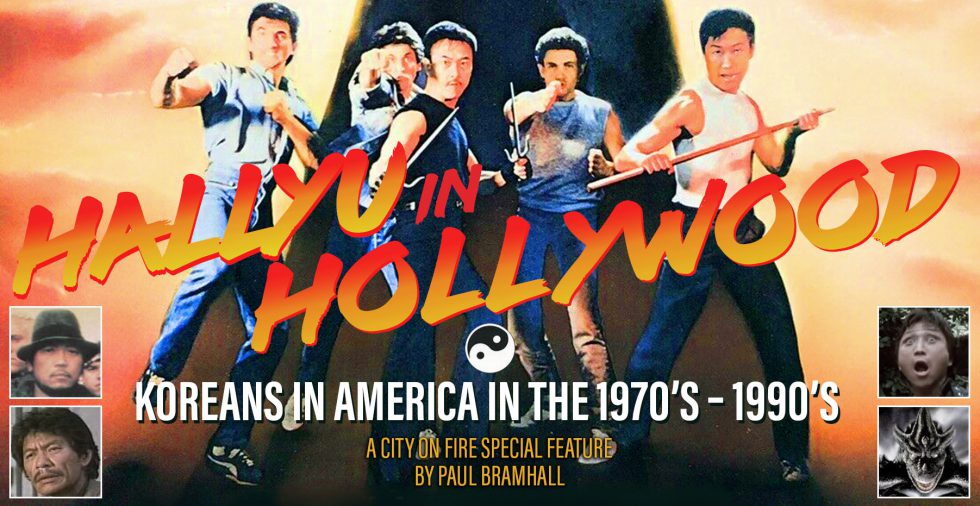
Корейское кино прошло долгий путь с момента зарождения корейской волны на закате 90-х и заре нулевых, достигнув пика в 2020 году, когда фильм "Паразиты" режиссёра Пон Чжун-хо отметился на церемонии вручения "Оскара". Конечно, корейцы присутствовали в Голливуде и до того, как "Паразиты" привлёк всеобщее внимание, а такие люди, как Ли Бён-хон ("Терминатор: Генезис", "Великолепная семёрка"), Пэ Ду-на ("Облачный атлас", "Восхождение Юпитер") и Чхве Мин-сик ("Люси") стали важными лицами компании TinselTown Productions. Сам Пон Чжун-хо стоял у руля англоязычного проекта "Сквозь снег" в 2013-м году, тогда, как другой его коллега по цеху Ким Чжи-ун, работал с Арнольдом Шварценеггером в "Возвращении героя", а Пак Чхан-ук с Николь Кидман в "Порочных играх" (всё в том же году).
Однако, мало кому известно, что корейцы снимали фильмы в США задолго до того, как началась корейская волна, ещё с середины 70-х. И пускай они далеки от крупных блокбастеров последних лет или даже откровенно плохи, но они были! Поэтому, если вы ищете редкий бриллиант, подобный "Паразитам", я честно предупреждаю, вы пришли не по адресу. Но, если вам нравятся ниндзя, которые мстят бандам, поющим о них оскорбительные песни, или то, как Брюс Ли выпрыгивает из своей могилы от удара молнии, или даже CGI-монстры, выглядящие так, будто их рисовали на Commodore 64, тогда добро пожаловать!
Ниже мы рассмотрим 25 картин периода с 70-х по 90-е годы (плюс ещё 4 фильма, достойных упоминания, в качестве бонуса), которые были либо сняты корейским режиссёром, либо с корейцем в главной роли. Так что, присоединяйтесь к нам в этом увлекательном путешествии в неизведанный мир корейского кино, снимавшегося в США в 70-е, 80-е и 90-е!
"Посетитель Америки", он же "Брюс Ли восстаёт из могилы" (1976)
Пожалуй, самый печально известный из всех корейских фильмов, снятых в Штатах. В 1976-м году, режиссёр Ли Ду-ён уже был знаком с жанром боевого кино, сняв ряд фильмов с Хан Ён-чхолем в качестве главной звезды. Занимаясь поиском талантов в США для фильма, который он намеревался там снимать, Ду-ён обратился к Джун Чонгу, инструктору по тхэквондо из Голливуда, и был достаточно впечатлён, чтобы подписать того на главную роль. Этим фильмом был "Посетитель Америки" (в котором также засветился молодой Сё Косуги во второстепенной, но боевой роли), и тут мы обычно говорим: "А остальное уже история".
Но не в этот раз, так как, несмотря на то, что "Посетитель Америки" стал хитом в Азии, его никогда не показывали там, где он был снят. Так было до тех пор, пока какие-то дистрибьюторы, желавшие быстро заработать, не подобрали его, полагая, что Чонг имеет некое сходство с Брюсом Ли. Несмотря на то, что он не имел ничего общего с Маленьким Драконом, предприимчивые западные дистрибьюторы просто добавили в начало фильма несколько секунд с новыми кадрами, показывающими могилу Брюса Ли, в которую впоследствии ударяет молния, заставляющая "Брюса Ли" выпрыгнуть из-под земли! Так, с новым названием "Брюс Ли восстаёт из могилы" и Чонгом, вдруг ставшим Брюсом К. Л. Льи, фильм Ду-ёна всё-таки нашёл свою аудиторию в Америке (а может быть, и во всём мире!).
"Бешеный" (1984)
Тот случай, когда все пути ведут к "Брюсу Ли, восстающему из могилы". Восемь лет спустя, пара учеников Чжун Чонга - братья, известные как Саймон и Филлип Ри - возглавят это поистине причудливое авангардное произведение боевого кинематографа. "Бешеный" был снят всего за неделю в Южной Калифорнии с бюджетом в 30000 долларов, и это явно фильм из разряда - "не поверишь, пока не увидишь". Если вкратце, то в центре сюжета находится Саймон Ри, который желает отомстить за убийство своей сестры. Однако, подобное описание не отражает многих нюансов, которыми изобилует данный фильм. Например, там есть злые маги, которые стреляют курицами из рук (причём, живыми!), а ещё пришельцы, контролирующие астральный план.
Несмотря на вопиюще низкий бюджет и полнейший идиотизм, творящийся на экране, если рассматривать фильм, как возможность для братьев Ри впервые заявить о себе, то он вполне отдаёт должное их талантам. Получив контроль над хореографией и съёмкой боевых сцен, братья подтянули к работе своих же учеников в качестве статистов (в том числе, молодого Лорена Аведона), в результате чего, тхэквондо здесь показано во всей своей красе. Вкупе с музыкальными вставками "Бешеный" выглядит настолько претенциозно, что если бы туда вошла песня, посвящённая тхэквондо, мы бы ни чуть не удивились… Но, увы, этой чести удостоится другой фильм, расположенный ниже в списке.
"Чайнатаун", также известный, как "Уличные бойцы из Лос-Анджелеса" и "Территория ниндзя" (1985)
Это первый фильм в нашем списке, режиссёром которого станет Пак Ву-сан, поэтому я сразу предупреждаю, что он появится здесь ещё 5 раз. Ни один другой корейский режиссёр, работавший в США в 80-е и 90-е, не обладал такой продуктивностью, его имя является синонимом фильмов о боевых искусствах с низким (если не сказать, нулевым) бюджетом. И если вам это имя мало о чём говорит, то, вероятно, это из-за того, что в Америке он был известен, как Ричард Пак. В Корее он снимал низкопробные, но весьма забавные фильмы о кунг-фу, например "Меня зовут Ноги-близнецы", также известный, как "Удар громового тигра", или "Четвёртый по величине храм Шаолинь", он же "Шаолинь: Кровавая миссия". Но, если же говорить о его американских работах, то обычно поделки Ву-сана выглядели так, будто он звонил всем из местной корейской общины в Лос-Анджелесе и привлекал их к работе над своими фильмами в том или ином качестве.
"Чайнатаун" стал его первым фильмом, снятым в Штатах, а также первым фильмом, профинансированным новообразованной продюсерской компанией Джуна Чонга Action Brothers Productions. История о соперничестве корейской и китайской школ в лос-анджелесском Чайнатауне, где все ученики выглядят минимум лет на 30. "Чайнатаун" примечателен не только присутствием самого Чонга, ещё там есть Филлип Ри, Лорен Аведон и Билл "Суперфут" Уоллес. Это была первая американская картина, где за хореографию отвечал бешеный кореец Кван Юн-мун, тогда ещё только прибывший в Штаты (позже он поставит "Связь через Майами"). В дальнейшем, "Чайнатаун" установит стандарт для большей части всей американской фильмографии Ву-сана - плохо освещённые сцены драк, ужасные диалоги и отвратительный продакшен. Однако, несмотря на все минусы, "Чайнатаун" всё-же обладает каким-то своим, необъяснимым обаянием.
"Маньчжурский мститель" (1985)
Снятый в 1982 году, но не выпускавшийся до 1985-го, это первый американский фильм с участием Бобби Кима, грандмастера тхэквондо, который иммигрировал в Колорадо в конце 70-х. Также известный, как азиатский Чарльз Бронсон (вы поймёте, почему, как только его увидите), Ким построил успешную кинокарьеру в Корее, снявшись в таких фильмах, как "Гадюка" и "Смертельный удар" (выступив противником Ло Лье). И хотя перспектива привнести корейский стиль тхэквондо в сеттинг дикого Запада, казалась весьма захватывающей, предшествуя аналогичным идеям, которые будут взяты на вооружение в "Американских приключениях" и "Шанхайских рыцарях" десятилетия спустя, на экране всё выглядит совсем не так.
"Маньчжурский мститель" сталкивает Бобби Кима с Биллом Уоллесом за 3 года до того, как у Уоллеса случится похожий поединок с Джеки Чаном (и сдаётся мне, что выход "Маньчжурского мстителя" уже в 85-м, был связан с появлением Уоллеса в "Покровителе" того же года, и вряд ли имел какое-то отношение к "Чайнатауну"!). Однако, если рассматривать данную работу, как демонстрацию талантов Бобби Кима, то, пожалуй, сложно будет снять что-то хуже "Маньчжурского мстителя" (сложно, но не то чтобы невозможно, так как мы ещё не прошлись по всему списку). Крайне посредственное творение от режиссёра, для которого это станет первой и последней работой, с участием актёров, в основном состоящих из местных жителей Колорадо. Лучше воздержаться от просмотра, если вы, конечно, не ярый фанат Бобби Кима. Или хотите увидеть сиквел "Жажды смерти", вышедший где-то в альтернативной Вселенной.
"Тёмно-синяя ночь" (1985)
Хотя на первый взгляд "Тёмно-синяя ночь" выглядит как типичная мелодрама той эпохи, её отличает то, что она была полностью снята на локациях в Лос-Анджелесе, и это, пожалуй, единственный случай в карьере легендарного Ан Сон-ги, когда он сыграл персонажа, которого иначе как мудаком не назовёшь. Мечтая о жизни в США, он оставляет свою беременную жену в Корее, чтобы получить грин-карту, ему это удаётся с помощью довольно хитроумного плана - вступить в фиктивный брак с кореянкой, уже проживающей там, её сыграла Чан Ми-хи. После того, как её собственный брак рушится, она начинает помогать корейским мужчинам, въезжающим в США, вступая с ними в отношения, однако, как только у неё появляются чувства к герою Сон-ги, события стремительно развиваются, приводя к трагическому финалу.
Режиссёр Бэ Чанг-хо дебютировал в 1982 году с культовой картиной "Люди из трущоб", что ознаменовало начало его сотрудничества с Ан Сон-ги, которое продлится следующие 10 лет в 12-ти фильмах. При том, что "Тёмно-синяя ночь" - далеко не лучшая их совместная работа, она охватывает интересный временной промежуток, посвящённый тому, как Корея воспринимала Америку в середине 80-х. Разумеется, не обойдётся без нелепых английских диалогов, а также фразочек, которые безнадёжно устарели за эти 35 лет, однако драматургия и тревожный тон повествования, пронизывающий всё это действо, определённо, делают фильм достойным внимания.
"Связь через Майами" (1987)
Пак Ву-сан, он же Ричард Пак возвращается (теперь, блистая ещё и перед камерой!)! Однако, в данном случае он не несёт всей ответственности за классическую формулу "настолько плох, что хорош", каковым и является "Связь через Майами". Во многом это заслуга Ким Ён-гуна, грандмастера тхэквондо, который сегодня известен тем, что продвигает свои программы самозащиты на различных американских телеканалах по продаже товаров для дома. Но в 80-е он считал, что лучшим способом продвинуть своё позитивное мышление в массы, будет - снять фильм, к которому он собственноручно напишет сценарий, сам его спродюсирует и сам же в нём снимется, впоследствии едва не обанкротившись. История группы друзей по колледжу (да, снова тридцатилетние дядьки играют подростков), которые образуют группу Dragon Sound. Растущая слава новоиспечённой группы и их песни о превосходстве над ниндзя и силе тхэквондо (видите, неспроста я об этом упомянал!), привлекает внимание злых ниндзя из Майами.
Невозможно в полной мере описать "Связь через Майами", ограничившись всего парой абзацев, так что не буду даже пытаться. В конечном счёте, Ким Ён-гун заделался ещё и со-режиссёром, ибо после того, как все дистрибьюторы и студии на планете Земля начали советовать выкинуть этот фильм на помойку, пару лет спустя он решил снять более оптимистичный и экшн-ориентированный финал, вновь собрав всех актёров. Ну, почти всех, главный злодей Чо Си-юн, которого мы запомнили по белому костюму ниндзя, видимо, был слишком занят, так как в финальном поединке, он неожиданно перевоплотился в кавказца. Магия ниндзя, не иначе!
"Бесшумные убийцы" (1988)
Спустя три года после выхода "Чайнатуна" / "Уличных бойцов из Лос-Анджелеса", Джун Чонг и Action Brothers Productions заявляют о себе в "Бесшумных убийцах". Избавившись от Пак Ву-сана, здесь Чонг вновь объединяет силы с режиссёром Ли Ду-ёном, в фильме которого он дебютировал 12 лет назад. И снова Чонг подтягивает своих учеников, чтобы выдать серию боевых сцен, которые, что называется, "тащат", разбавляя общую серость. В главной роли, наверное, самый узнаваемый ученик Чонга, Сэм Джонс - парень, сыгравший Флэша Гордона в одноимённой классике 1980 года. Также к звёздному актёрскому составу примыкает Линда Блэр, играющая его жену. И да… это фильм, о котором вы никогда не просили - Флэш Гордон, Риган из "Экзорциста" и воскрешённый Брюс Ли объединяются, чтобы сразиться, как вы уже догадались, с ниндзя!
Продакшен этого фильма будет получше, чем у пробившего дно "Чайнатауна", и дабы вы поняли, насколько лучше, предположу, что им удалось-таки наскрести ещё 10 долларов и пустить их в дело. Однако, здесь хватает развлечений, типичных для B-movie, что делает "Бесшумных убийц" (которых по факту в фильме нет - в каждой сцене, где появляются ниндзя, они начинают буквально драть глотки) неплохим способом убить полтора часа. В качестве бонуса, Филлип Ри появится здесь за год до того, как сцена с его участием перекочует в "Лучшие из лучших" - его драка в ванной против брата Саймона, практически окупает просмотр.
"Парень-тхэквондист Эрни и мастер Ким" (1989)
На IMDb главным героем фильма значится Бобби Ким, он же азиатское воплощение Чарльза Бронсона, на самом же деле, это единственное экранное появление некоего Бобби Джей Кима. Он, соответственно, играет учителя тхэквондо, мастера Кима, живущего в США, который берёт под своё крыло ученика по имени Эрни. И в продолжении темы… ученика играет Эрни Рейес мл. Да, тот самый. Здесь ему всего 17, а уже через год ему достанется роль в фильме "Черепашки-ниндзя 2: Тайна изумрудного зелья", которая впоследствии определит его карьеру. Здесь же парень-тхэквондист Эрни на пару с мастером Кимом, ввязывается в операцию по незаконному обороту наркотиков, возглавляемую нечистым на руку бизнесменом, и, разумеется, герои делают всё возможное для того, чтобы ему помешать.
В режиссёрском кресле находится Нам Ги-нам, ответственный за одни из самых отвратных корейских фильмов о кунг-фу, известных человечеству, в том числе и те, в которых снимался Брюс Ле ("Возвращение красного тигра" - один из них, и этим всё сказано). Фильм этот выходил только в Корее, и то, каким чудом Ги-наму удалось снять его в США, вероятно, останется одной из величайших загадок столетия, но что ещё любопытнее - куда делся Бобби Джей Ким?
"Роковая месть" (1989)
При том, что многие корейские мастера боевых искусств, снимавшие кино в США в 80-е и 90-е, занимали свою маленькую нишу, и не были известны широкой публике, можно с уверенностью сказать, что даже те из нас, кто знает о ребятах вроде Бобби Кима и Джун Чонга, могли и вовсе не слышать про такого актёра, как Джулиан Ли. Чемпион по тхэквондо, перебравшийся в Штаты в возрасте 14 лет, Ли был каскадёром в телевизионном проекте режиссёра Филипа Джей Рота "Неудачная поездка" 1988 года, и Рот был настолько впечатлён ногомаханиями Ли, что решил снять фильм с ним в качестве главной звезды. Так появилась на свет "Роковая месть", и хотя я могу подтвердить тот факт, что фильм выпускался на VHS, к сожалению, попытки найти какие-либо рецензии на него, или хотя бы нарезки оттуда, оказались для меня невыполнимой задачей.
Но что ещё более удивительно в "Роковой мести" и участии в данной картине Джулиана Ли, так это то, что здесь история не заканчивается (Й. К. Ли, привет), в последующие 22 года, Ли сыграет центрального персонажа ещё в 6-ти фильмах. Так что, да, если у вас сейчас промелькнула мысль о том, что это не последнее его появление в нашем списке, вы абсолютно правы.
"Уличные солдаты" (1991)
Третий и последний продюсерский проект Джуна Чонга и его компании, Action Brothers Productions, считающийся лучшим его фильмом по мнению некоторых (хотя, будем честны, качество так себе). Эдакий тематический подход к боевым искусствам на фоне Вестсайдской истории, с характерной особенностью фильмов Чонга, когда студентов играют мужики за 30, и, конечно же, актёрскими перфомансами, на которые без слёз не взглянешь. Явный туз, спрятанный в рукаве у "Уличных солдат", - это наличие в касте легендарного мастера в фехтовании ногами Хван Джан-ли, играющего телохранителя главного злодея. Это станет единственным появлением Джан-ли в американском кино, которое запомнится зрителю не столько его фирменными ударами, сколько откровенно бутафорской коброй, обвивавшейся вокруг его шеи на протяжении всего фильма. Это просто нужно видеть.
Кстати, Джан-ли воспользовался именем сына для своего американского дебюта, поэтому здесь он указан, как Джейсон Хван. Ну а что касается вопроса на миллион долларов, то да, мы действительно увидим схватку Джуна Чонга и Хвана Чжан Ли. Выглядящий куда более резвым по сравнению с тем, каким мы привыкли его видеть, Джан Ли доказывает, что порох у него ещё есть, только не ждите чего-то сопоставимого с его гонконгскими или корейскими работами. Примечательно, что Чонг исчезнет из киноиндустрии после "Уличных солдат" и снова объявится 15 лет спустя в 2006 году, чтобы спродюсировать и заодно принять участие в фильме "Яростный бой в клетке". О, и для тех, кому интересно - нет, режиссёр Ли Гарри не кореец. Эти имена могут сбить с толку!
"Посмотри на меня, Америка", он же "Бандитское правосудие" (1991)
Хорошего человека не убить, поэтому спустя 5 лет после "Связи через Майами" (ну, или тех эпизодов, которые он снимал сам!) Пак Ву-сан, он же Ричард Пак, возвращается в режиссёрское кресло в фильме "Посмотри на меня, Америка", также известном, как "Бандитское правосудие"! Видимо, впечатлившись дракой Джуна Кима с Хваном Джан-ли в "Уличных солдатах" того же года, здесь Ву-сан уже выдвигает Кима на главную роль, заставляя его вжиться в персонажа, над которым постоянно издеваются за то, что он сын азиатских иммигрантов. Ву-сан вновь собирает актёрский состав, который, похоже, состоит исключительно из представителей местной корейской общины, предлагая зрителю ужасную актёрскую игру и странные проблемы с повествовательным ритмом.
Однако, фильм примечателен участием в нём Эрика Эстрады, неожиданно играющего "богатого белого человека", при том, что сам он ни фига не белый. Здесь Ву-сан идёт на такой мрачный финал, который заставил в своё время Ким Ён-гуна переснять финал "Связи через Майами", и тут куда меньше экшн-сцен, чем в других его поделках, что в купе с убогим продакшеном фильма, делает просмотр совершенно невыносимым. Пожалуй, самым интересным элементом фильма является арт-работа, украсившая всевозможные VHS-издания в Штатах, выходившие под названием "Бандитское правосудие". Благодаря изображениям, которые не имели ничего общего с самим фильмом, и полному отсутствию на них Джун Кима в какой-либо форме, неудивительно, что посетители видеопроката, были явно сбиты с толку тем фильмом, что они в итоге увидели.
"Линия смерти" (1991)
"Линия смерти" завершает нашу подборку фильмов за 1991 год и знаменует возвращение Бобби Кима, который не оставляет попыток внести Колорадо на карту, в качестве новой обители тхэквондо, и по-прежнему делает это из рук вон плохо. Подобно "Маньчжурскому мстителю", снятому в 1982 году, но отложенному до 1985-го, "Линию смерти" сняли в 1989-м, но выпустили лишь спустя пару лет. Переместившись с Дикого Запада в современный американский городок, в "Линии смерти" мы наблюдаем за тем, как Ким возвращается в Колорадо, проведя 10 лет в тюрьме за преступление, которого он не совершал. Задолбанный обитателями городка и шерифом, хоть и в меньшей степени, чем небезызвестный Джон Рэмбо, вскоре Ким начинает отвешивать местным жителям серии чудовищно вялых пинков и затрещин, причём так медленно, что если бы вы попытались воспроизвести их в слоу-мо, то у вас получился бы целый фильм.
Аналогично работам своих современников, Пак Ву-сана и Чжун Чонга, "Линия смерти" представляет собой крайне малобюджетную поделку, и единственным актёром в этом фильме, обладающим хоть каплей таланта в боевых искусствах, является сам Бобби Ким. Режиссёром же значится таинственный Ричард Х. Ким, который кроме "Линии смерти", другими фильмами не отметился. Помнится, в своём обзоре я предположил, что это вполне может быть псевдоним самого Бобби Кима. Поскольку отрицать сам факт своего участия в "Линии смерти" было бессмысленно, изменив имя, он мог частично оправдаться тем, что хотя бы не был режиссёром такого до жути нудного фильма.
"Мой самурай" (1992)
Как мы и обещали, Джулиан Ли возвращается с фильмом "Мой самурай". Данная картина по праву может считаться самой известной в его фильмографии (во многом, благодаря Blu-ray релизу 2019 года от MVD Rewind Collection). Видимо, в процессе съёмок, Ли посетила мысль о том, что Бобби Ким проделал отличную работу по нанесению штата Колорадо на всемирную карту тхэквондо, поскольку Ли тоже обосновался там, и начал снимать большинство своих фильмов в Денвере, продолжая дело предшественника.
Обычная история о том, как парень, посещающий школу боевых искусств, становится свидетелем убийства, совершённого бандитами, и впоследствии Ли приходится вмешаться, чтобы разобраться с ними и спасти положение. Раздражает то, что пацан (которого играет Джон Калло, так больше нигде и не снявшийся) постоянно обращается к Ли, как "Мой самурай", притом, что речь, вообще-то, идёт о тхэквондо. Но, эй, это же 1992 год, так что не будем сильно придираться.
Интересно отметить, что главную роль Ли получил благодаря тому, что был исполнительным продюсером фильма "Железное сердце" с Боло Йеном, выпущенным в том же году компанией Imperial Entertainment, как раз искавшей новую звезду боевиков категории Б. Как говорится, оказался в нужное время в нужном месте!
"Три ниндзя: Костяшками вверх" (1993)
Пожалуй, нет имени более синонимичного корейскому кинематографу, чем Щин Сан-ок, режиссёр, работавший в индустрии с начала 1950-х и ответственный за такие классические произведения, как "Цветы в аду" и "Моя мама и её гость". Сан-ок был женат на самой популярной актрисе той эпохи Чхве Ын-хи, которая в 1978 году была похищена в Гонконге северокорейскими агентами по приказу Ким Чен-ира. Вылетев в Гонконг лично, дабы провести расследование, Сан-ок также был схвачен, и, проведя какое-то время в лагере по перевоспитанию после двух неудачных попыток побега, в 1983-м он начинает снимать фильмы в Северной Корее под руководством Ким Чен-ира. Самым известным из которых стал северокорейский кайдзю-фильм "Пульгасари".
Продвигая свои фильмы в Вене в 1986-м, Сан-ок и Ын-хи бросаются в посольство США, и получив политическое убежище, в конечном итоге поселяются в Вирджинии, а позже, уже в 90-е, перебираются в Лос-Анджелес. Не желая возвращаться в Южную Корею, опасаясь того, что служба безопасности может не поверить в его историю о похищении, Сан-ок подтягивает Пак Ву-сана и, сменив имя на Саймон Шин, берёт на себя режиссёрские обязанности, выпустив в 1993 году "Три ниндзя: Костяшками вверх", сиквел детского фильма 1992 года "Три ниндзя". Как вы можете себе представить, данный фильм выделяется из всей фильмографии Сан-ока, словно распухший от ушиба палец, хотя интересно то, что он выступал в качестве исполнительного продюсера следующих двух сиквелов в 1994 и 1998 годах, перед своим возвращением в Южную Корею.
"Ангелы с чёрными поясами" (1994)
В 1994 году Бобби Ким вновь покоряет экраны в фильме "Ангелы с чёрными поясами", и в этот раз он действует в паре с режиссёром Ким Хё-чхоном (вопреки IMDb, где режиссёром указан некий Ким Чи, я могу подтвердить, что никакие ферментированные овощи не принимали активного участия в режиссуре данного фильма). Осмелюсь предположить, что Хё-чхон переехал в Калифорнию, где и проходили съёмки, после того, как снял свой последний фильм в Корее в 1984 году, и, видимо, как-то раз, Бобби Ким решил устроить себе отпуск, ненадолго выбравшись из Колорадо, так, воспользовавшись случаем, они за компанию и сняли фильм. По иронии судьбы, Хё-чхон был режиссёром единственного фильма, по факту снятого в Корее, в котором засветился Джун Чонг (парень, который обязательно всплывёт где-нибудь в этом списке!), речь идёт о фильме 1980 года, "Одинокая звезда Осаки".
Как не трудно догадаться, сюжет "Ангелов" повествует о школе тхэквондо, которую вот-вот закроют, и учениках, делающих всё возможное, чтобы это предотвратить. Естественно, их усилия провоцируют гнев мафиози и его армии тренированных ниндзя, но к счастью, наши юные героини являются обладательницами чёрных поясов! Далее следует смесь дико затянутых сцен погонь на роликовых коньках, переодеваний в красно-бело-синие костюмы для надирания задниц, и просто какое-то запредельное количество криков "Кия!". И конечно же, с непременным атрибутом этого фильма (как и многих других, перечисленных выше) - смачным "дыщ-бдыщ", доносящимся из колонок, но с другой стороны, в арсенале у четырёх главных героинь, хотя бы, имеется пара-тройка реальных приёмов тхэквондо, которые они убедительно демонстрируют. В остальном же, сплошной стыд и ужас.
"Чайнатаун 2", он же "Китайский квартал в Америке" (1995)
Вездесущий Пак Ву-сан возвращается с тематическим сиквелом "Чайнатауна", также известного как "Уличные бойцы из Лос-Анджелеса", вышедшего в 1985-м году, на сей раз, его главным козырем является присутствие на главной роли Ли Тхэ-чжуна, грандмастера и сына основателя боевого искусства хварандо (человека, благодаря которому, по словам Микки Рурка, он смог вернуть свою жизнь в нужное русло). Плюс компанию ему составит Роберт З'Дар, известный по фильму "Маньяк-полицейский". Каст "Чайнатауна 2" объединяет всех корейских мастеров боевых искусств, которые снимали фильмы (ну, назовём это так) в Америке в 80-е и 90-е годы - тут вам и Джун Чонг, и Бобби Ким и даже Филлип Ри мелькнёт на экране. Прямо корейская версия "Неудержимых", и, возможно, фильм вышел бы неплохим, будь в режиссёрском кресле не Пак Ву-сан.
Очевидно, Ву-сан был полон решимости доказать, что в этой стране можно снимать фильмы десять лет подряд, не проведя ни малейшей работы над ошибками, из-за чего "Чайнатаун 2", лучше всего можно описать, как испытание, через которое нужно пройти. Как обычно, сюжет крутится вокруг мастера боевых искусств, волей судьбы оказавшегося сиротой (но, в отличие от "Связи через Майами", тут они, хотя бы, не сколачивают группу), основное внимание уделяется развивающемуся роману между Тхэ-чжуном и девушкой, которую он однажды спасает. Сложности возникают, когда выясняется, что девушка - сводная сестра главаря банды, который растил его с детства. Если вы ждёте от фильма красивой демонстрации хварандо, что-то худо-бедно найти всё же удастся, но не надейтесь что-либо увидеть, спасибо Ву-сану и его запатентованной технике "снимать в такой кромешной темноте, что ни черта не разглядеть". Удивительно, но Ву-сану каким-то чудом всё-же удастся снять ещё один фильм в США.
"Лучшие из лучших 3: Нет пути назад" (1995)
Во многих отношениях, данная серия фильмов считается первооткрывателем пути, который десятилетие спустя пройдёт франшиза "Неоспоримый" с персонажем Бойки, но именно Филлип Ри сделал это первым с "Лучшими из лучших". Если первые два фильма с Робертом Рэдлером на посту режиссёра и Эриком Робертсом в главной роли, следуют концепции турнира, то в третьей части, уже сам Ри дебютирует в качестве режиссёра, делая своего персонажа, Томми Ли главной звездой шоу. Полностью отойдя от турнирной темы, которой "Лучшие из лучших" придерживались до сего момента, в "Нет пути назад" персонаж Ри возвращается в свой родной сельский городок (чтобы навестить сестру, о которой раньше нигде не упоминалось), и вскоре выясняет, что его оккупировали скинхеды-нацисты, топящие за превосходство белой расы.
Также на экране блистает набиравшая тогда обороты Джина Гершон в роли учительницы хора и боевой подруги Ри. Антирасистское послание, которое стремится донести до зрителя режиссёр-новичок, смотрится, по большей части, наивно и глупо. Однако, если вы готовы смириться с тем, что это уже другие "Лучшие из лучших", то получите немалую долю фана, наблюдая за режиссёрским дебютом Ри в его же сольном проекте. Нормальная такая "бэшка" с главным героем, бьющим морды скинхедам. Есть примеры и хуже.
"Город ветров" (1997)
Иногда появляется такой фильм, который буквально ставит тебя в тупик, даже в 2021-м году. Сей факт обнадёживает и удивляет в равной степени!
"Город ветров", как раз из этой категории. Картина, была снята в Нью-Йорке и позже выпущена на VHS в Корее лейблом Han Cinetown, который обычно специализируется на эротическом кино. Помимо этой информации, больше ничего нет. Ничего на Google и даже на корейских поисковиках, типа Naver, будто фильма и вовсе не существовало в природе.
VHS-кассеты "Города ветров" всё ещё ходят по рукам коллекционеров всевозможной продукции данной страны, мы можем лишь предоставить вам фото одной из них, в качестве наглядного доказательства того, что это не плод нашего воображения.
"Корейские киллеры: Список семьи" (1997)
После главной роли в "Чайнатауне 2", грандмастер хварандо, Ли Тхэ-чжун захотел снять фильм о том, каково это, быть американцем корейского происхождения в Лос-Анджелесе, и поведать историю о двух братьях, которые стремятся стать членами банды корейских киллеров (реальной банды, действовавшей на территории Лос-Анджелеса). Этим фильмом стал "Корейские киллеры: Список семьи", который начали снимать в 1995 году, и, скорее всего, за не имением других вариантов, Тхэ-чжун усадил Пак Ву-сана в режиссёрское кресло, сей факт явно говорит о том, что съёмки стартовали сразу после того, как закончили с сиквелом "Чайнатауна". Однако, было отснято всего 70% материала, и лишь спустя пару лет, фильм достали с пыльной полки и попытались превратить в цельный, законченный продукт. А как мы знаем, целостность - это не самая сильная сторона Ву-сана, поэтому трудно сказать наверняка, вышло бы из этого хоть что-то стоящее, если бы оставшиеся 30% всё-таки были досняты.
"Корейские киллеры" интересны тем, что в роли второго брата (единственной своей роли в американском кино) здесь выступает Щин Хён-джун ("Бишунмо - Летящий воин", "Призрачный меч"), параллельно снимаясь в другом фильме, "Кровать гинкго". И он весьма неплохо справляется с английскими диалогами, играя здесь персонажа, состоящего в отношениях с ныне покойной Карен Ким ("Отряд "Морские котики" 2"). Как и "Парень-тхэквондист Эрни и мастер Ким", "Корейские киллеры: Список семьи" выходил только в Корее, и оригинальный материал был утерян. На сегодняшний день, фильм доступен только на корейских VHS-кассетах, и, несмотря на его низкий бюджет и вопиющие недостатки, которым не видно конца и края, смотрится он всё же поинтереснее второго "Чайнатауна" (к тому же наши старые знакомые, Бобби Ким и Джун Чонг также отметятся здесь!).
"Лучший из лучших 4: Без предупреждения" (1998)
Все обязательства, касательно продолжения франшизы "Лучшие из Лучших", которыми Филлип Ри, может, как-то и был связан в 3-й части, посылаются куда подальше в части 4-й, получившей название "Без предупреждения". Вообще, тут уже можно с уверенностью сказать, что от своего персонажа Томми Ли, Ри позаимствовал только имя, так как сценарий, судя по всему, доработали, чтобы хоть как-то приплести эту часть к франшизе "Лучшие из лучших" (сценарий писался в соавторстве с Ри). Начнём с того, что теперь он вдовец, воспитывающий шестилетнюю дочь! А с учётом того, что фильм "Лучшие из лучших 3: Нет пути назад" вышел всего тремя годами ранее, становится ясно, что здравый смысл вышел покурить. Хотя кого это вообще волнует, когда перед нами самый, что ни на есть классический сюжет боевика 90-х - Ри начинает преследовать русская мафия, когда к нему в руки попадает украденный компьютерный диск!
Здесь Ри снова режиссёр и исполнитель главной роли, и, как уже упоминалось, в этот раз он приложил руку ещё и к сценарию! Очевидно, тут он позиционирует себя, как экшн-звезду уровня Сигала/Ван Дамма, и, несмотря на то, что "Без предупреждения" обладает всеми атрибутами, характерными для B-movie, Филип неплохо справляется с задачей, надирая задницы плохишам. Даже немного обидно, что после этого фильма он исчезнет из киноиндустрии на следующие 17 лет, и вернётся лишь в 2015-м с "Неудачниками", где он также выступит в качестве режиссёра, сценариста, и сыграет заметную роль.
"Улица Тигра" (1998)
Джулиан Ли возвращается на экраны после 6-летнего перерыва в 1998 году в фильме "Улица Тигра", столкнувшись лицом к лицу с детищем Филлипа Ри, "Лучший из лучших 4: Без предупреждения" в битве за лучший ногомахательный боевик категории Б. Неудивительно, что Ли играет - как вы уже догадались - учителя тхэквондо, в очередной раз обучая детей боевым искусствам, и держа их подальше от жестоких банд наркоманов, заполонивших район. Упомянутый район - настоящая выгребная яма, кишащая наркотиками, и расположенная в Денвере, штат Колорадо. Я готов поклясться, что взрослые ученики тхэквондо никогда не были обязательным атрибутом данного конкретного жанра, но это всего лишь моё наблюдение. Главная изюминка фильма в том, что здесь Ли играет учителя поневоле. Ранее он преподавал тхэквондо в Северной Корее, где этот вид спорта объявлен вне закона, но как только о деятельности Ли узнают приспешники Ким Чен-ира, то, понятное дело, не воспылав тёплыми чувствами, бросают его в тюрьму.
Воспоминания всё ещё не дают ему покоя, и с тех самых пор он больше не преподавал, однако, благодаря ограниченному актёрскому диапазону Ли, ему не понадобится много времени, чтобы преодолеть все свои страхи и сомнения, и согласиться преподавать снова. За счёт характерной для Ли деревянной актёрской игры, энергичных ударов ногами и, разумеется, режиссёра, для которого данная картина является единственной в его послужном списке, подобно тому самому Тигру (да, его персонаж называет улицу в честь самого себя), возвращение Ли на экраны удовлетворит все, связанные с ним ожидания.
"Ночь на воде" (1998)
Ладно, мы признаем, что немного сжульничали, добавив сюда этот фильм, так как действие его происходит в Канаде, но всё-же взяли на себя ответственность включить его в наш список, на случай, если кто-нибудь вдруг захочет с ним ознакомиться. Изначально запрещённый в Корее, фильм "Ночь на воде" стал единственным появлением Ли Сын-хи в главной роли в корейском кино. Бывшая модель Playboy, удостоенная чести стать первой азиаткой, появившейся на обложке данного журнала. Здесь она играет проститутку, которая пытается сбежать от воспоминаний о своём жестоком отчиме, ища спасение в текиле, сексе и наркотиках. А ещё она мечтает превратиться в кита, но тут я уже не стану вдаваться в подробности. Жизнь главной героини не становится намного лучше, когда она встречает корейского парня, который теряет работу в инвестиционной компании, впоследствии попадая в круговорот выпивки и азартных игр.
Парня играет Ю Джи-ха, для которого данный фильм стал первым и последним в карьере, что, возможно, даёт некоторое представление об уровне его актёрской игры. Картина снята режиссёром Кан Чжон-су, который позже встанет у истоков корейской волны с фильмом "Бегу к тебе", но вот чем является "Ночь на воде", так до конца и не ясно. Вместо этого нам остаётся наблюдать за тем, как Ли Сын-хи и Ю Джи-ха, поглощённые друг другом, занимаются сексом в слоу-мо, и обсуждают её навязчивую идею стать китом. Всё это, в конечном счёте, приводит к довольно грустному финалу. Единственным утешением служит то, что любой, кто осилит фильм до этого момента, скорее всего, уже будет чувствовать себя несчастным какое-то время.
"Американские драконы", он же "Двойной предел" (1998)
В конце 90-х/начале нулевых, Пак Чун-хун отметился в нескольких англоязычных ролях. Так, в 1997 году он сыграл главную роль в запутанной комедии "В розыске", которая была снята в Австралии, а в 2002-м появился во второстепенной роли вместе с Марком Уолбергом и Тэнди Ньютон в фильме Джонатана Демми "Правда о Чарли". Но лишь в 1998-м в "Американских драконах", он получил шанс сняться в главной роли на пару с Майклом Бином. Здесь он играет сеульского полицейского, который отправляется в Америку, идя по следу неуловимого убийцы из якудза, убившего его семью много лет назад. Тандем Чун-хуна и Бина в роли американского копа, оказался на удивление эффективным, превратив то, что, в противном случае, стало бы очередным заурядным фильмом категории Б, в нечто куда более удобоваримое.
Во многих отношениях "Американских драконов" можно рассматривать, как "Двух полицейских: Интернэшнл" (если это, конечно, можно поставить в один ряд с "Людьми в чёрном"!), проводя параллель с аналогичными ролями Чун-хуна в "Двух полицейских" 1993 года (где он работал в паре с частым заезжим гастролёром, Ан Сон-ги) и "Двух полицейских 2" 1996-го (здесь он делил экранное время с Ким Бо-соном). За счёт напряжённого сюжета, в центре которого главные герои, втянутые в разборки между итальянской мафией и японскими якудза во главе с Кэри-Хироюки Тагавой, а также изрядной доли мордобоя, ударов тхэквондо и свистящих пуль, "Американские драконы" занимают далеко не последнее место в фильмографии Чун-хуна.
"Глубокий порез" (1999)
Прежде, чем Джон Х. Ли прославился, как режиссёр, поставивший картину "Не хочу забывать" - классическую слёзовыжималку в духе корейской волны, а также военные драмы "71: В огне" и "Операция "Хромит"", дебютировал он в 1999 году с фильмом "Глубокий порез". Обучившись в школе искусств Тиша в Нью-Йорке после переезда в Штаты в возрасте 12-ти лет, Ли, вдохновлённый классическими гангстерскими фильмами Мартина Скорсезе, решил рассказать свою историю о простом парне, наполовину корейце, наполовину белом, работающем разносчиком еды в китайском ресторане, который волей судьбы пересекается с лидером корейской банды. Их экранными воплощениями стали Александр Мэннинг и Дэвид Ли МакИннис, соответственно. Фильм этот стал дебютом для обоих актёров, и если Мэннинг появился лишь в нескольких второстепенных ролях, прежде, чем окончательно исчезнуть из киноиндустрии, то МакИннис же напротив, продолжил успешную актёрскую карьеру (в частности, сыграв Рэйдена в сериале 2013-го года "Смертельная битва: Наследие" ).
"Глубокий порез", несомненно, слегка грубоват по краям, да и в самом сценарии влияние Скорсезе порой ощущается слишком явно, и всё это вкупе с не самой выдающейся актёрской игрой, но, тем не менее, талант Ли явно просвечивает в этой мрачной кинематографии и освещении. От того и совсем неудивительно, что по возвращении в Корею, он стал снимать лучше и размашистее.
"Йонггари" (1999) / "Ящер", он же "Рептилия 2001" (2001)
Комик Сим Хён-рэ, возможно, не так широко известен на западе, но в 80-е и 90-е он был очень узнаваемым лицом в Корее, снявшись в более чем 40 фильмах, включая популярный сериал "Вурои-мэ", эдакая корейская токусацу-франшиза с гигантскими роботами, пришельцами и изрядным количеством дерзких шуточек. Хён-рэ и сам ни раз выступал в роли режиссёра ( а также мелькал во многих фильмах Нам Ги-нама, снявшего "Парня-тхэквондиста Эрни и мастера Кима"), а в 1999 году так и вовсе решил, что пора ему выходить на международный уровень, замахнувшись, ни много ни мало, на ремейк корейской классики в жанре кайдзю, "Йонгари, Монстр из глубины" 1967-го года. Тут мы тоже малость смухлевали, так как фильм "Йонггари" 1999-го года был снят в Корее, но мы внесли его в список, поскольку в касте присутствуют американские актёры, что придаёт ему вид и ощущение голливудской картины, финал которой, предположительно, разворачивается в Лос-Анджелесе (ключевое слово - предположительно).
После успешного локального релиза, Хён-рэ почувствовал себя Джорджем Лукасом, и решил поиграть с уже готовым фильмом, добавив новые спецэффекты и декорации, слегка изменив историю, и введя новых персонажей. В Корее он был выпущен под названием "Йонггари: 2001. Обновлённое издание", и тот шквал критики, что впоследствии обрушился на фильм, был сравним лишь с его громким кассовым провалом. Немного иронично, что именно версия 2001 года была в итоге выбрана для дистрибьюции в США, где её переименовали в "Ящера". Имея в наличии позорные спецэффекты, ужасную игру почти всех актёров и просто запредельное количество тупых моментов, "Ящер" представляет собой квинтэссенцию наидерьмовейшего фильма, и это был ещё не последний раз, когда Хён-рэ попробовал себя в жанре кайдзю.
Фильмы, достойные упоминания
Следующие четыре фильма были сняты уже в поздние нулевые, однако мы добавили их в наш список, поскольку корейские таланты, стоящие у руля этих проектов, начинали свою карьеру в 80-е и 90-е.
"Война динозавров" (2007)
После скурпулёзного продакшена "Йонггари", Сим Хён-рэ вернулся в 2007-м году с фильмом "Война динозавров", который, как он был уверен, принесёт ему международное признание. Более того, он настолько был уверен в успехе, что корейская версия фильма заканчивалась его словами о том, что с "Войной динозавров", он непременно добьётся успеха на мировом рынке. В этот раз он действительно добрался до Лос-Анджелеса, где и была снята примерно половина фильма, сюжет которого повествует о мифических существах, посещающих Землю каждые 500 лет, вызывая хаос и разрушения. Теперь их должны остановить бравые ребята в лице Роберта Форстера и Джейсона Бера… да, в отличие от "Йонггари", в "Войне динозавров" приняли участие уже более маститые актёры.
Несмотря на значительно улучшенные спецэффекты, которые по праву можно назвать впечатляющими, и большое количество зрелищных сцен, Хён-рэ всё-таки не смог обрулить те же подводные камни, что потопили его предыдущую картину - смехотворные сюжетные ходы, кринжовый сценарий, и непоследовательный темп повествования. "Война динозавров", по крайней мере, удостоился показа в американских кинотеатрах, однако этого оказалось недостаточно, чтобы спасти Хён-рэ от банкротства в 2013-м году (после того, как ему не удалось убедить банк, выдавший 5 миллиардов вон на производство фильма, в том, что это были инвестиции, а не кредит) и десяти месяцев тюремного заключения за невыплату зарплаты сотрудникам.
"Последний крёстный отец" (2010)
Сейчас, оглядываясь назад, и будучи уже в курсе того, что Сим Хён-рэ станет банкротом всего через три года после выхода "Последнего крёстного отца", закрадываются подозрения, что фильм этот явно снимался в попытке заработать денег на кассовых сборах, которые погасили бы его немаленький долг, связанный с провалом "Войны динозавров". Такая теория (как, впрочем, и любая другая) вполне имеет место быть, поскольку она объясняет сам факт существования "Последнего крёстного отца", а этим вопросом, так или иначе, задавались практически все, кому довелось посмотреть данное кино. После высокобюджетных эпиков "Йонггари" и "Войны динозавров", ставших самыми дорогими корейскими картинами на тот момент, для своего последнего американского фильма, Хён-рэ решает вернуться к привычному для себя комедийному амплуа, которое и принесло ему известность двадцатью годами ранее.
История об уходящем на покой боссе мафии, который собирается передать бразды правления своему внебрачному сыну с уровнем развития шестилетнего ребёнка (прошу заметить, это моё личное мнение, а не реальная сюжетная деталь), его-то и играет Хён-рэ, что, в свою очередь, влечёт за собой целый вагон уморительных сцен. В попытке превзойти самого себя, для роли своего экранного отца, Хён-рэ изначально планировал воссоздать Марлона Брандо при помощи компьютерной графики, но, когда стало ясно, что это обойдётся ему в кругленькую сумму, он воспользовался услугами Харви Кейтеля. Мы можем лишь предположить, что у Хён-рэ были реальные связи в мафии, раз он убедил актёра такого калибра подписаться на это.
"Код убийцы" (2011)
В новом тысячелетии Джулиан Ли удостоился главной роли в трёх фильмах, в их числе "Дракон и ястреб" 2001-го и "Медвежонок и хозяин" 2008 года, но для нашего списка мы выбрали фильм 2011-го года, "Код убийцы".
Кинематографическая лебединая песня Ли, всё-таки, запечатлеет то, чего все ("все", то есть "никто" в данном случае) ждали, ибо два корейских мастера тхэквондо из Колорадо, наконец, разделят экранное время. Да, появление Бобби Кима в этом фильме, станет его первой ролью после "Корейских киллеров" 1997 года. К сожалению для Ли, несмотря на главную роль в своём последнем фильме, его имя вообще не фигурирует в маркетинговой компании, и, скорее всего, виной тому Чхве Мин-су, который играет здесь северокорейского антагониста.
Один из самых узнаваемых корейских актёров, сыгравший главные роли в таких картинах, как "Сеул" и "Меч воина", к 2011-му году, Мин-су заработал репутацию человека, с которым трудно работать из-за его вспыльчивого характера, и сдаётся мне, что именно это послужило ключевым фактором его появления в данном фильме. Именно Мин-су достаются все почести в "Коде убийцы" (на пару с гонконгской актрисой Тиффани Йи), повествующем о пропавшем диске, на котором содержатся инструкции по конструированию смертоносной ракеты. Да, даже сюжет прямиком из 90-х.
"Неудачники" (2015)
После фильма "Лучший из лучших 4: Без предупреждения", Филлип Ри исчез из киноиндустрии, чтобы объявиться 17 лет спустя с "Неудачниками", которых он охарактеризовал, как свой самый личный проект. Ри снова сел в режиссёрское кресло, написал сценарий и снялся в главной роли. Причина, по которой мы внесли "Неудачников" в наш список, заключается в том, что здесь, вроде как, вся старая банда снова в сборе, поскольку Ри также затащил в фильм своего учителя Джуна Чонга. А, как вы помните, Чонг открывал этот список с фильмом "Брюс Ли, восстаёт из могилы", так что нам показалось вполне уместным, что он же этот список и закроет. Помимо Ри и Чонга, здесь отметятся и другие светила боевого кинематографа: Дэн Иносанто, Бенни "Реактивный" Уркидез, Дон "Дракон" Уилсон и Ричард Нортон - прямо-таки каст мечты.
К сожалению, хотя и вполне ожидаемо, страстный проект Ри также можно по праву назвать его самым трудноперевариваемым фильмом. По-видимому, в Ри вселился дух Пак Ву-сана, поскольку режиссура и монтаж представляют собой сплошную кашу, а сценарий до такой степени слащавый и примитивный, что без блевотного пакета осилить это будет крайне трудно. Ах да, что касается Чонга и компании… мало того, что у них тут нет боевых сцен, им даже слова не дадут сказать! Да, это детский фильм о группе ребят, изучающих боевые искусства, чтобы дать отпор подлым Скорпионам из Беверли-Хиллз, впрочем, даже самый снисходительный ребёнок от этого не застрахован.
Официальный источник: cityonfire.com
Автор статьи: Пол Брэмхолл
Дата публикации: 23.05.2021
Перевод: Black Dragon
Метки: Underdog Kids, Билл Уоллес, Бобби Ким, Джина Гершон, Джулиан Ли, Джун Чонг, Ким Ён-гун, Кэри-Хироюки Тагава, Ли Тхэ-чжун, Лорен Аведон, Майкл Бин, Пак Ву-сан, Саймон Ри, Сё Косуги, Сэм Дж. Джонс, Филлип Ри, Хван Джан-ли, Щин Хён-джун, Эрни Рейес мл.



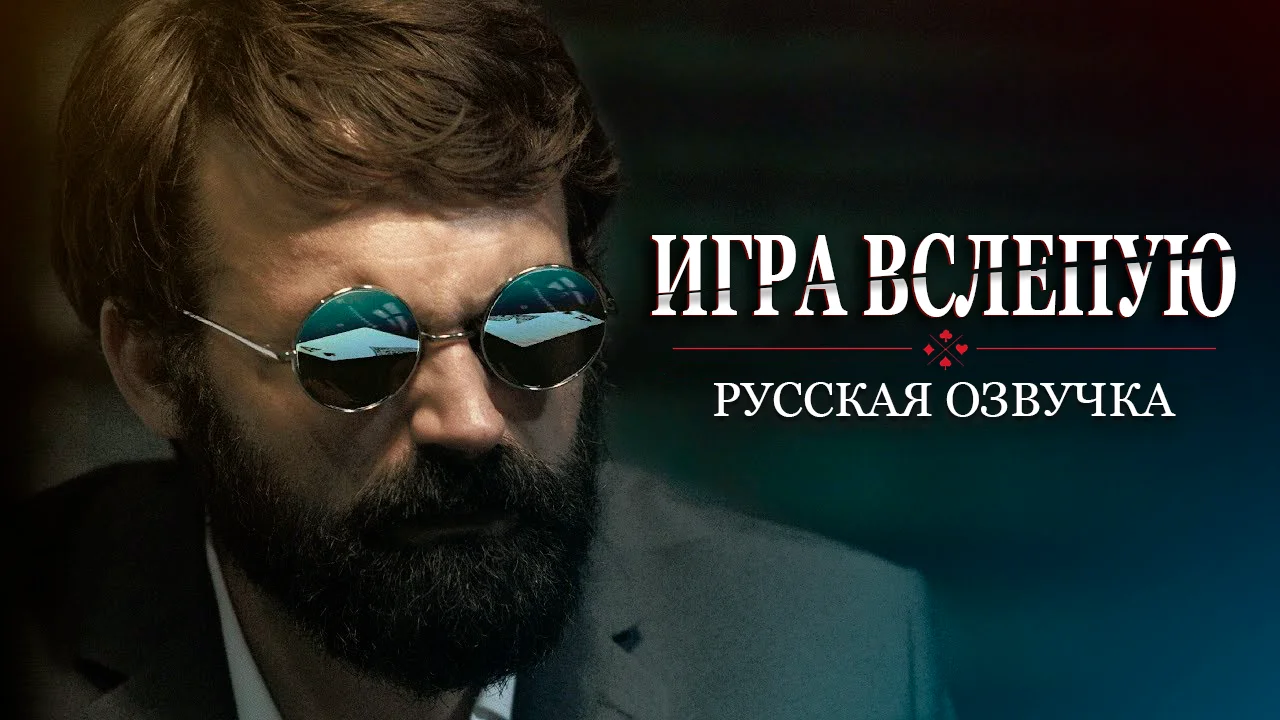
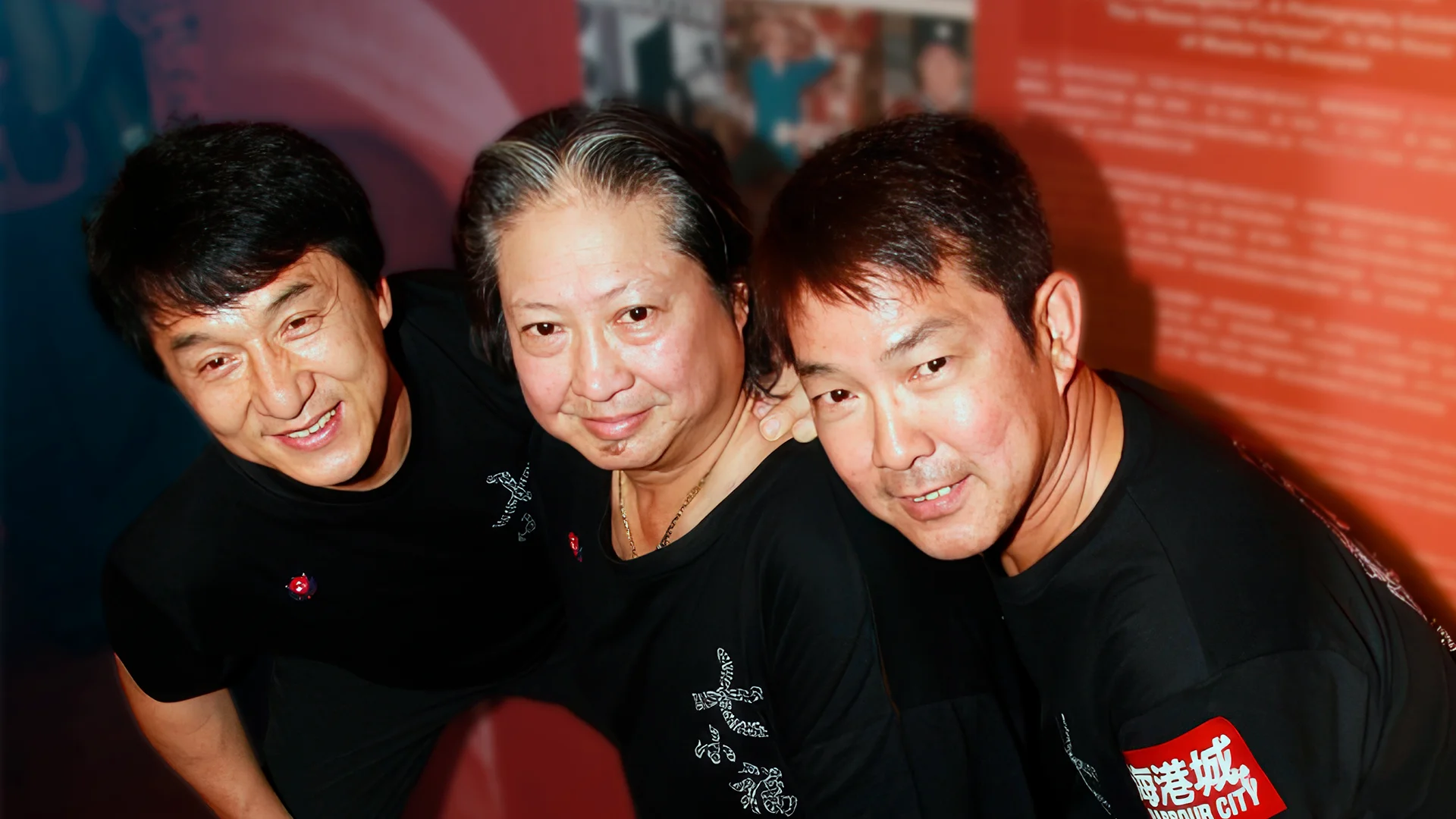
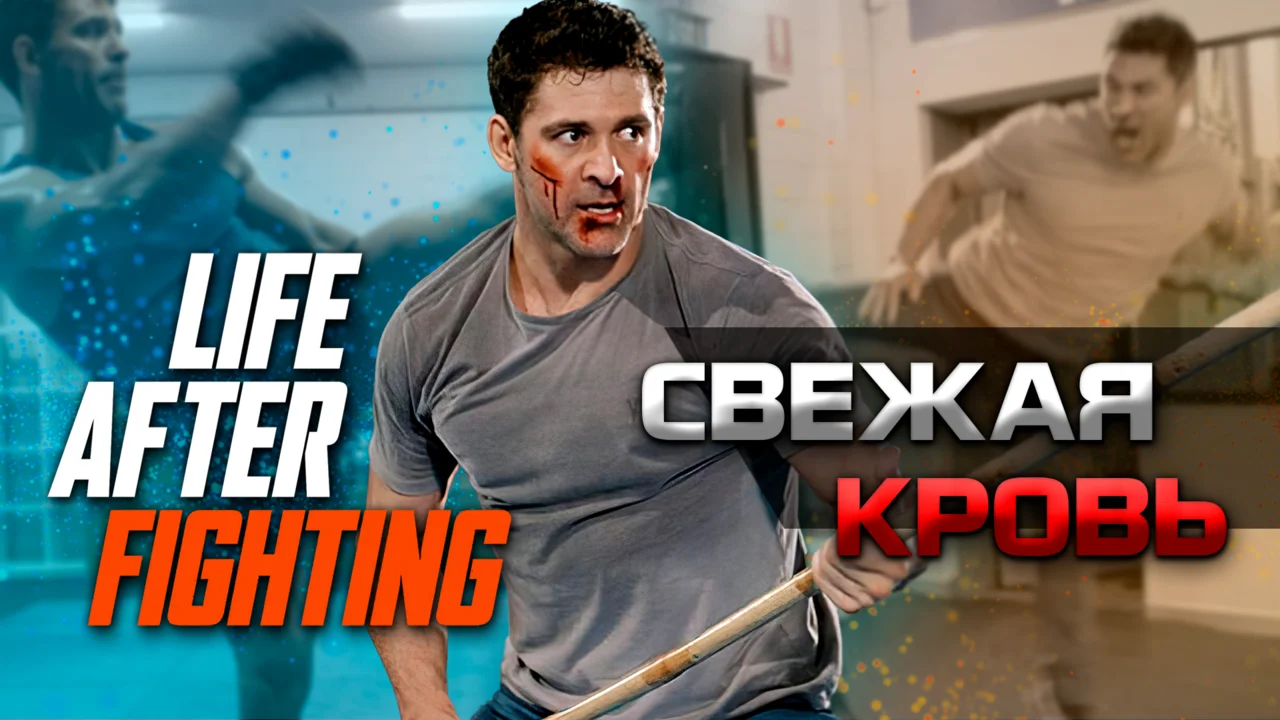
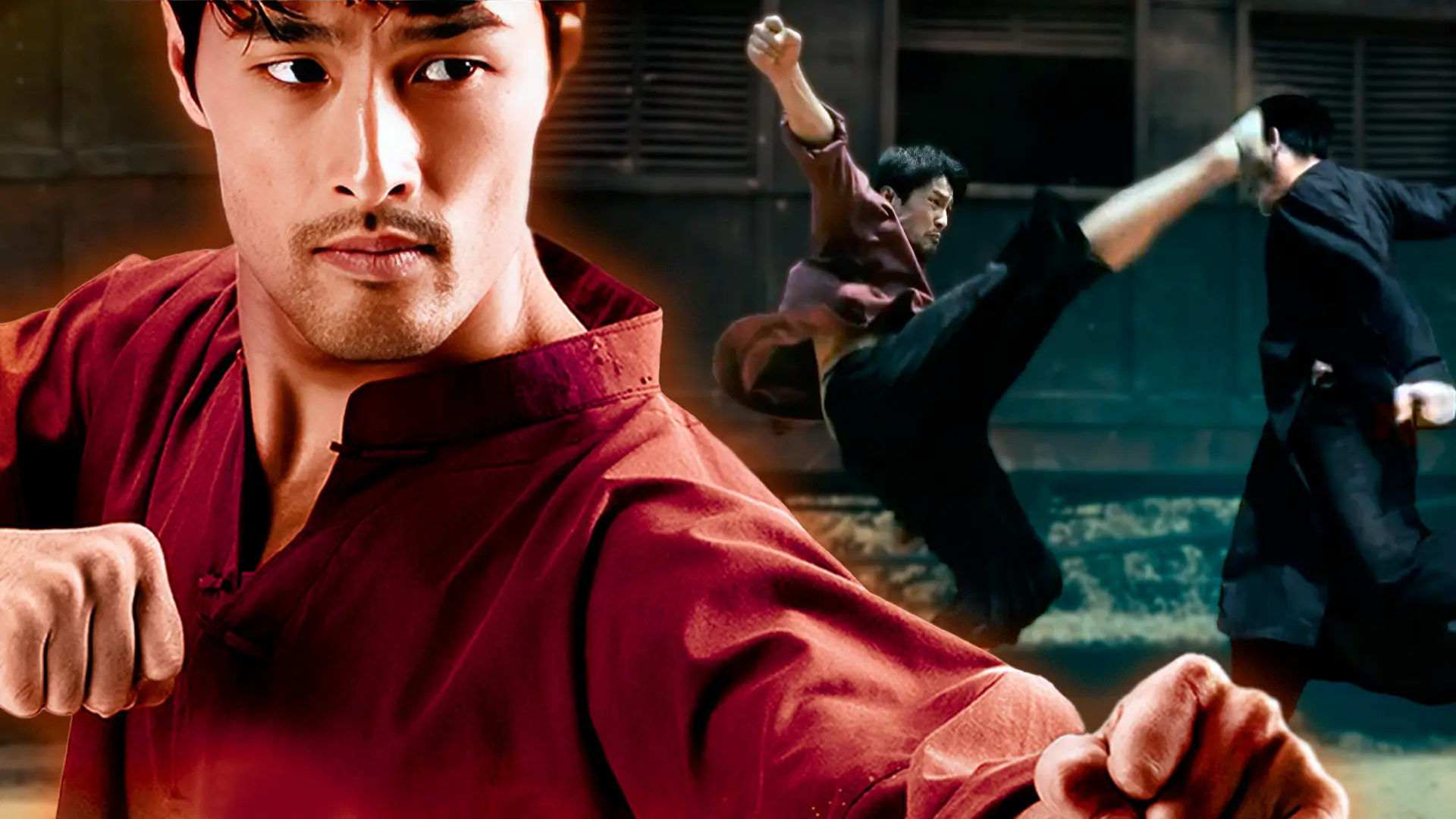
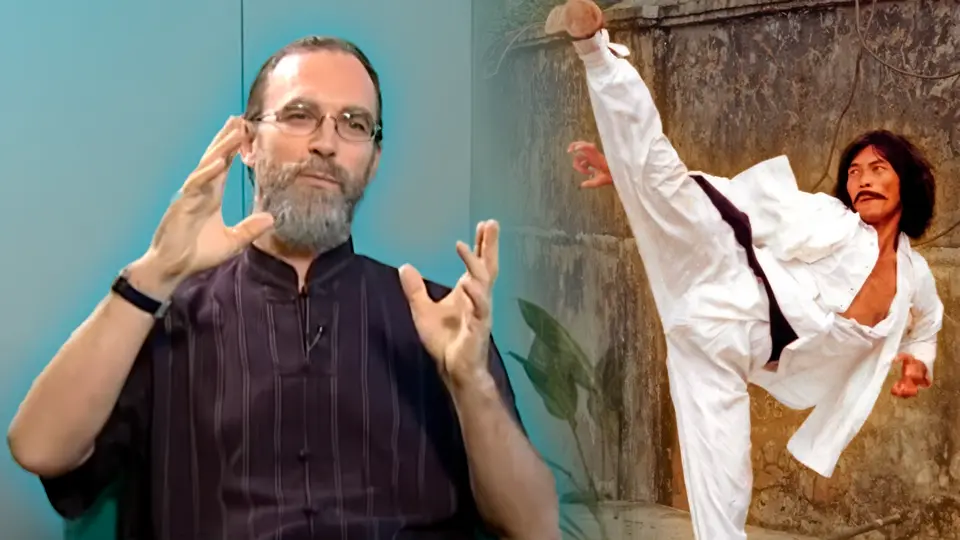
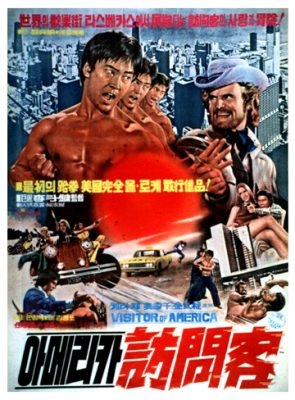
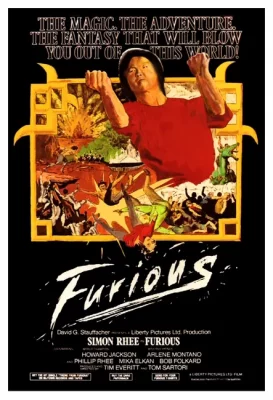
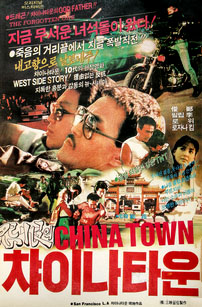
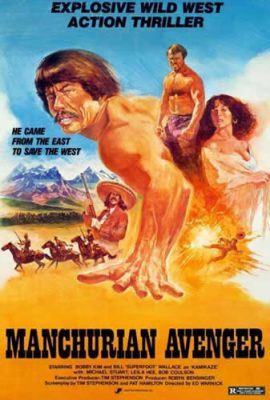
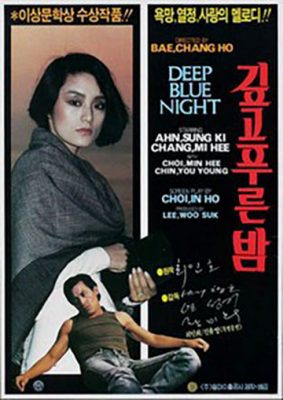
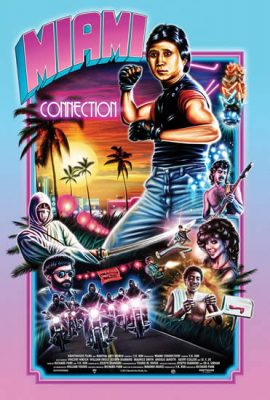
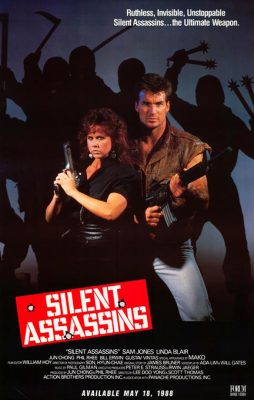
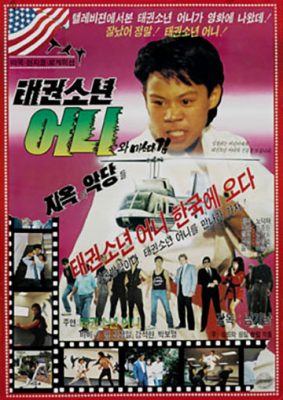
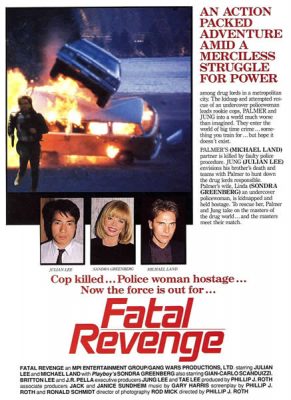
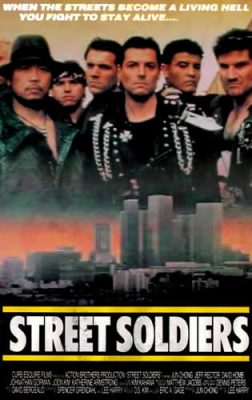
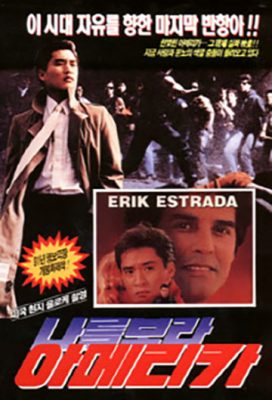
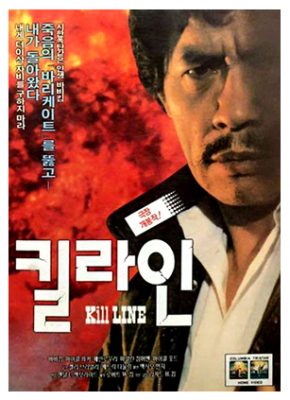
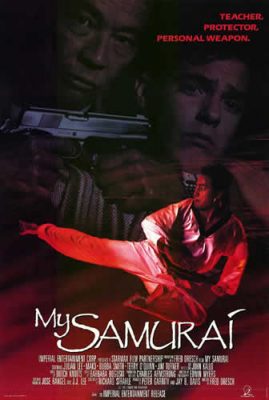
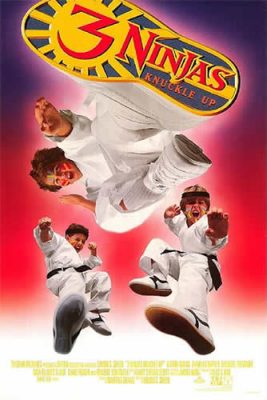
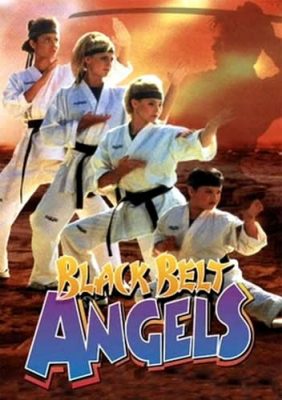
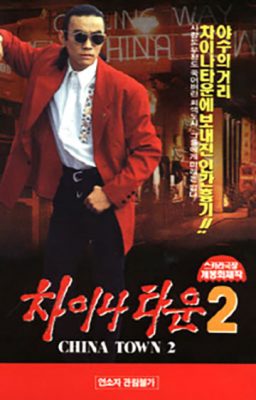
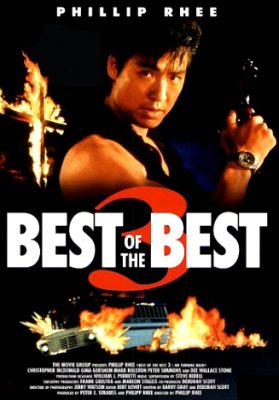
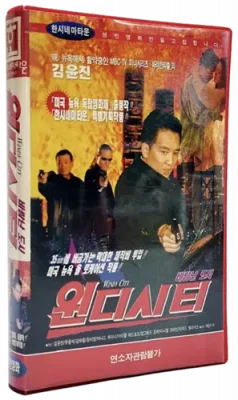
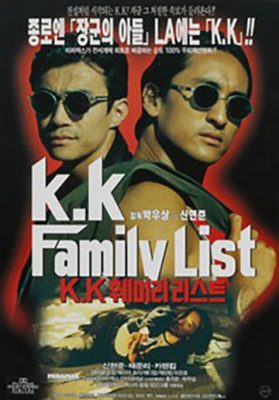
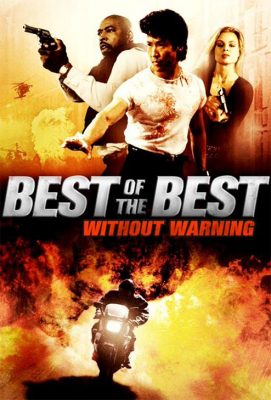
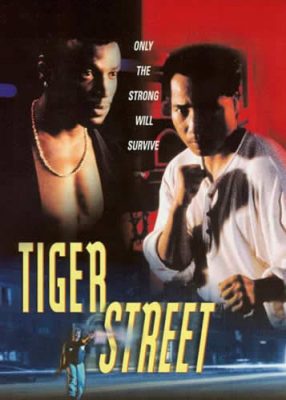
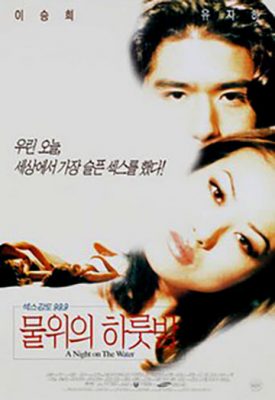
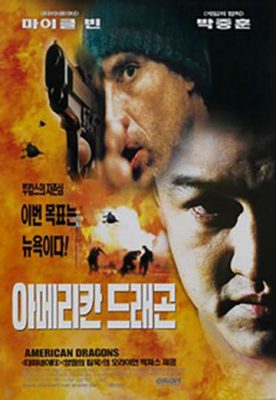
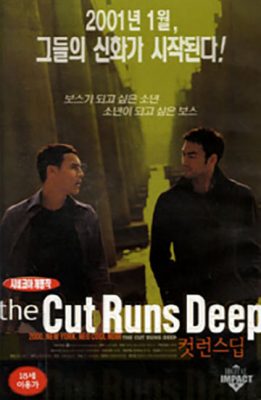
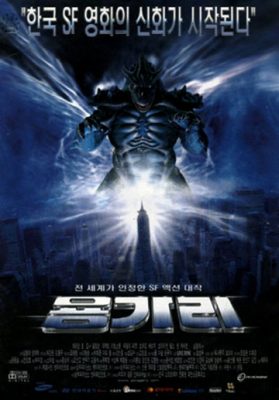
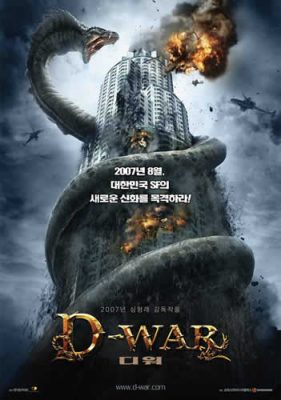
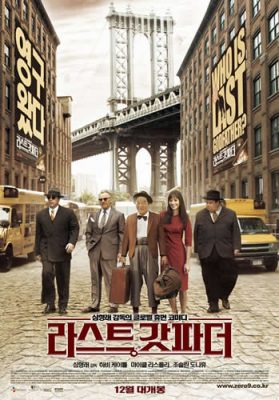

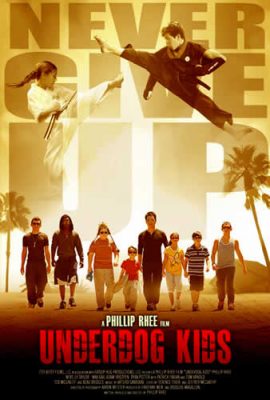
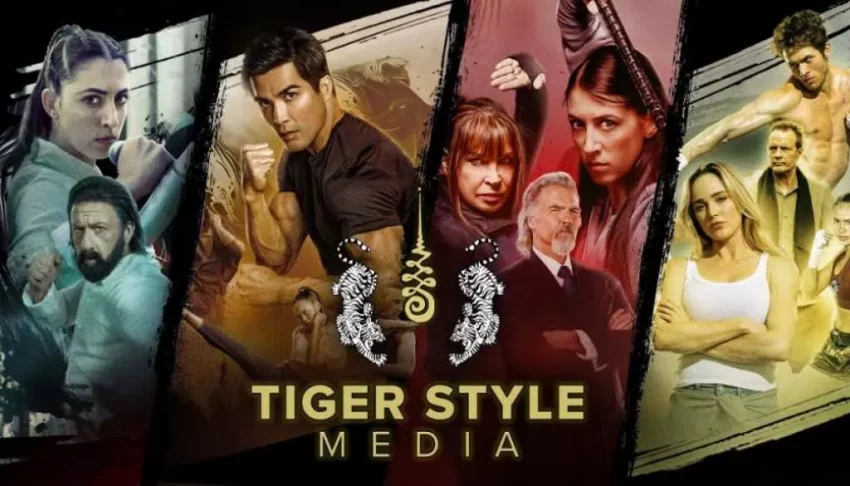
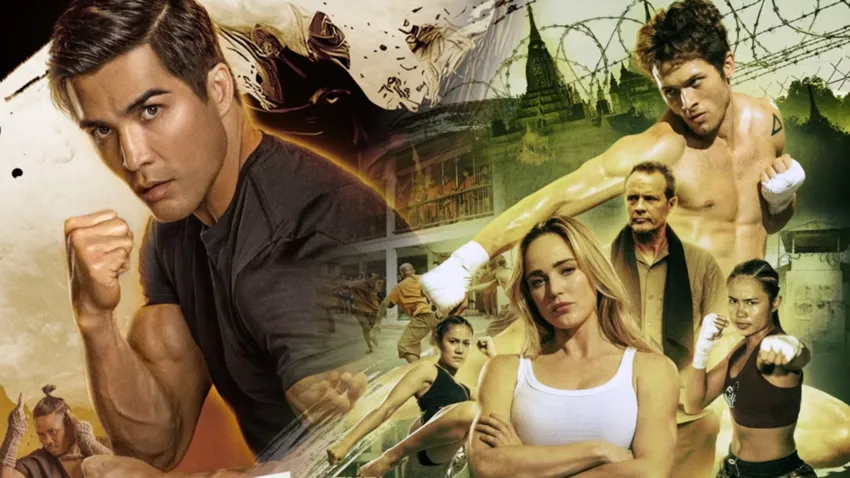
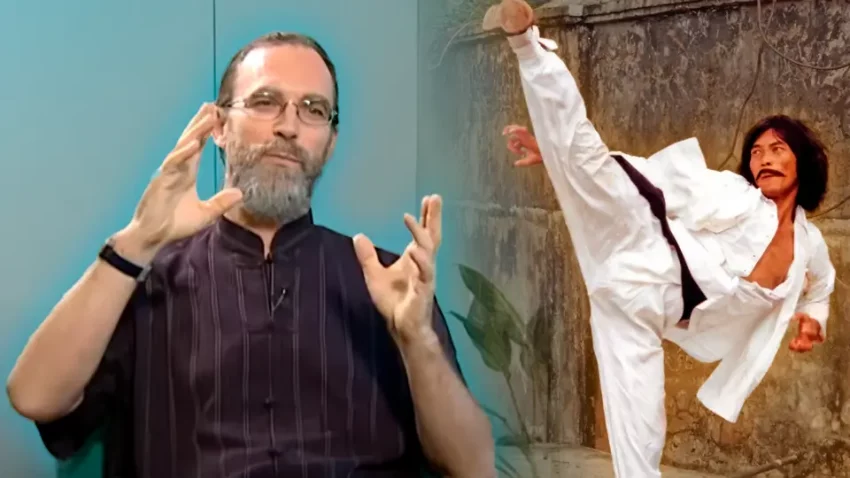
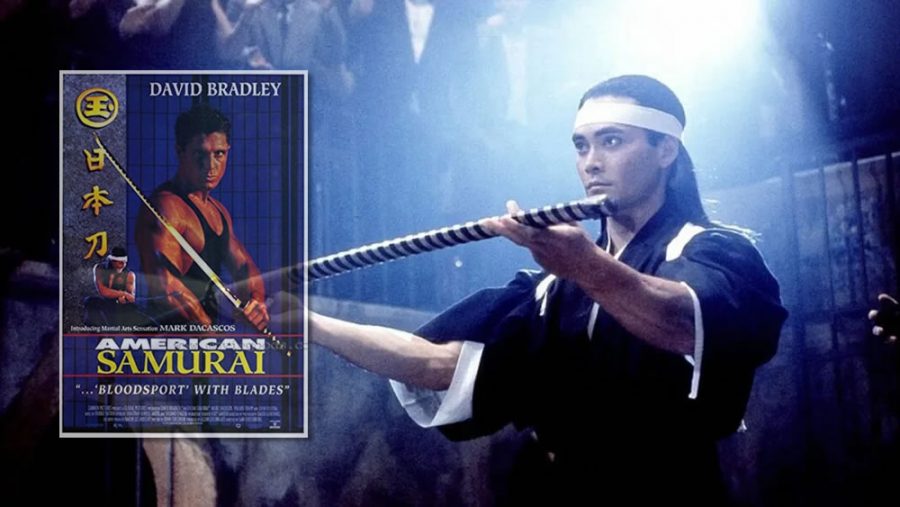
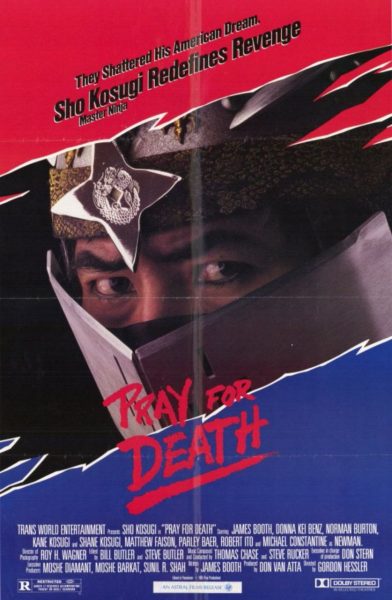
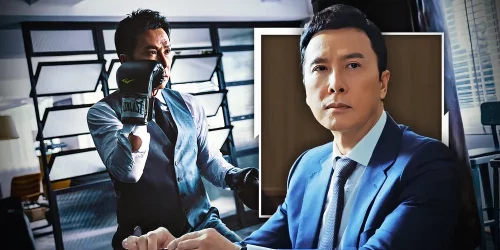
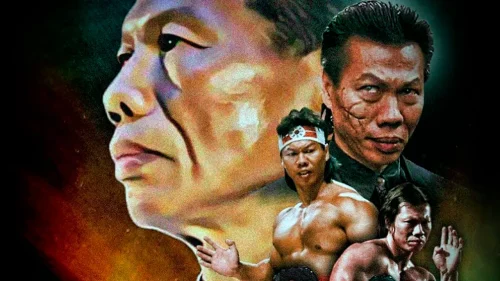
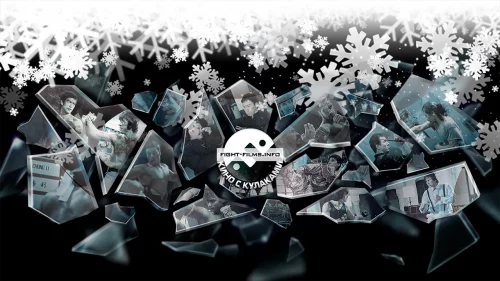
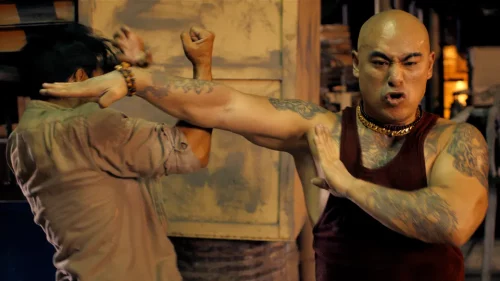
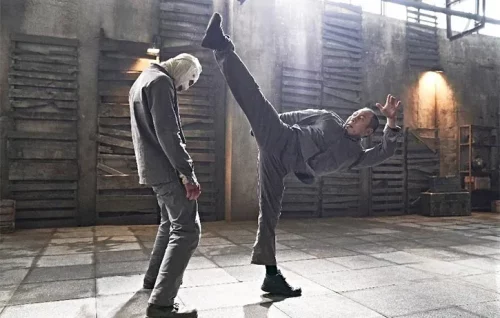
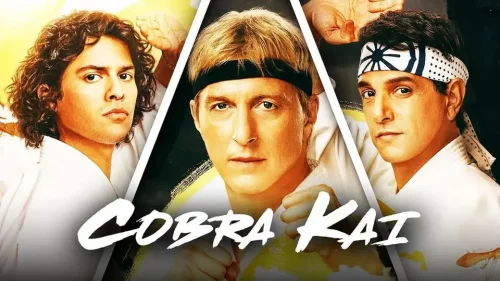
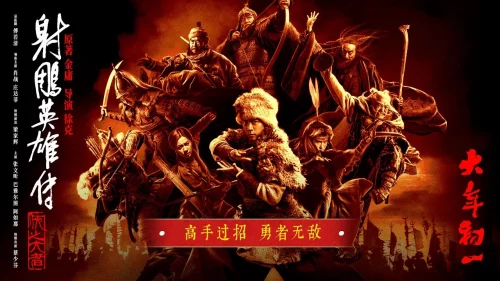
Обалденнейшая статья! Грандиозная работа!
Отдельный лайк за сравнения и пассажи типа:
Wave,
Присоединяюсь. Отличный материал и отличный перевод, который украшает наш сайт! Ждем от Черного Дракона новых переводов.
Данил Чупахин,
Спасибо, что оценили. Буду переводить и дальше по мере возможности и времени.
Black Dragon,
Впервые за долгое время появилось интересное интервью -> https://filmcombatsyndicate.com/a-love-of-the-fury-a-conversation-with-director-jesse-v-johnson/
Если будет время, будем благодарны за перевод.
Данил Чупахин,
Сделаем! Я, правда, Джоша Мэйби ещё не начинал, но сейчас, более-менее свободен. Так что... начну тогда с этого нового интервью, а то попозже переведу.